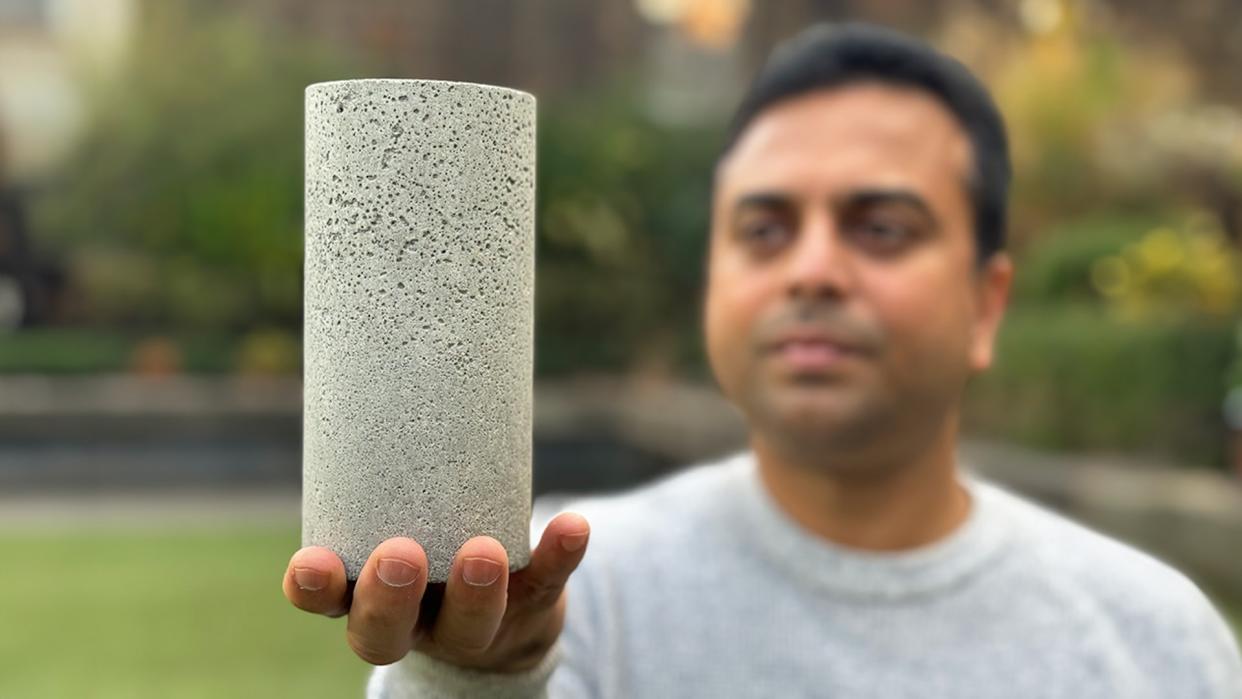Scientists transform hazardous material into breakthrough building product with major benefits: 'A massive win'

A breakthrough in transforming hazardous ash into an in-demand building material could help solve a major problem in the construction industry.
A press release by RMIT University in May revealed that engineers successfully replaced 80% of the cement in concrete with coal fly ash, a toxic waste generated by burning dirty fuel in coal-fired plants. According to RMIT project lead Dr. Chamila Gunasekara, most low-carbon concretes contain no more than 40% of fly ash.
"Our addition of nano additives to modify the concrete's chemistry allows more fly ash to be added without compromising engineering performance," Gunasekara said in the release.
Various state and national governments have been working to close existing coal plants, which release pollutants linked to severe health issues, including heart problems, neurological disorders, cancer, as well as premature deaths, according to the Union of Concerned Scientists.
However, as RMIT University noted, the ash already generated by plants will "remain abundant" in Australia for decades even as the world transitions to clean, non-polluting energy like solar and wind.
Meanwhile, cement production is widely reported to account for around 8% of worldwide carbon pollution, contributing to a warming planet that causes destructive weather events to become more frequent and extreme. While some builders have turned to alternative weatherizing materials, like the affordable hempcrete, the demand for cement continues to grow.
Watch now: Solar-powered boats from the Honnold Foundation are making a difference in the Amazon
Scientists have been investigating how to reduce harmful construction-sector pollution, and coal ash appears to be another promising solution. A separate project by the University of Victoria examined how fly ash and bottom ash may be able to create carbon-sequestering concrete.
RMIT University's research — conducted in collaboration with the Ash Development Association of Australia and AGL's Loy Yang Power Station — also looked at pond ash. Large concrete beam prototypes reveal that the team's fly ash and pond ash methods met quality and environmental standards.
"It's exciting that preliminary results show similar performance with lower-grade pond ash, potentially opening a whole new hugely underutilized resource for cement replacement," Gunasekara said in the release, noting that Australia's dams alone have hundreds of megatonnes of the hazardous waste. "... The ability to repurpose this ash in construction materials at scale would be a massive win."
As Interesting Engineering pointed out, one challenge to adopting less polluting materials in construction has been proving that they will last reliably over time. To address this, RMIT partnered with Hokkaido University's Dr Yogarajah Elakneswaran to develop a computer modeling program.
"We've now created a physics-based model to predict how the low-carbon concrete will perform over time, which offers us opportunities to reverse engineer and optimize mixes from numerical insights," RMIT virtual computational mechanics expert Dr. Yuguo Yu explained in the release.
The team hopes its findings, published in the journal Cement and Concrete Research, will help build confidence in the potential of low-carbon concretes.
Join our free newsletter for weekly updates on the coolest innovations improving our lives and saving our planet.

